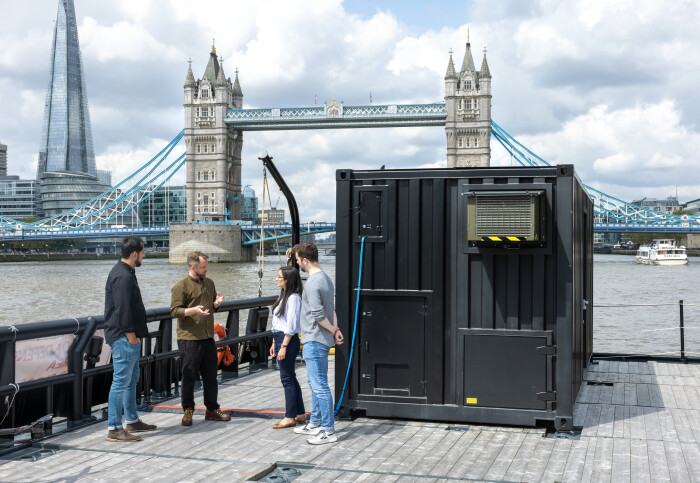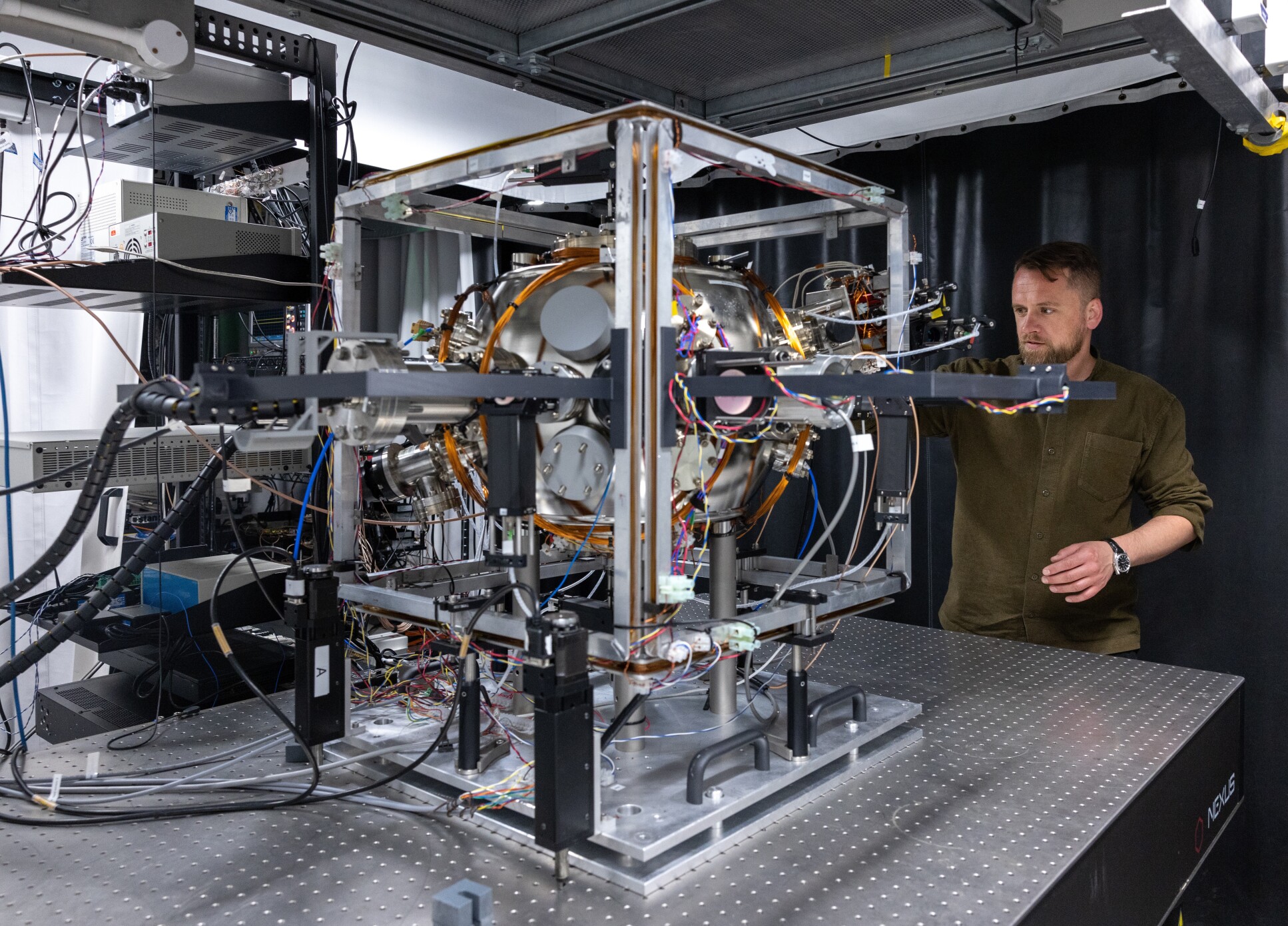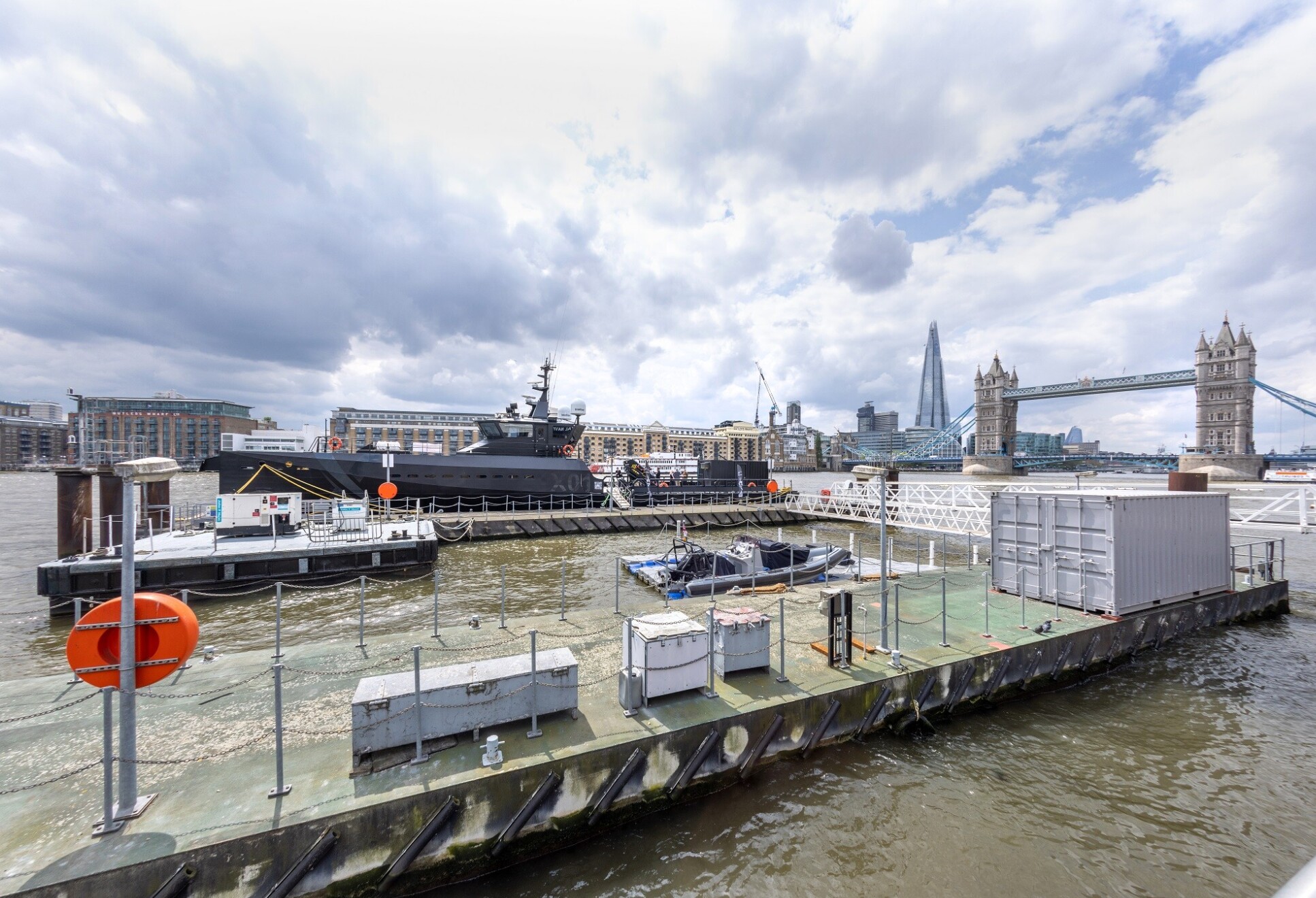Quantum sensor for a future navigation system tested aboard Royal Navy ship

A prototype quantum sensor built at Imperial, with potential application in GPS-free navigation, has been tested in collaboration with the Royal Navy.
The test marks an important step in bringing new quantum technologies out of the lab and into real-world settings.
Access to the Patrick Blackett provides us with a unique opportunity to take quantum sensors out of the lab and into the real-world environments, where they are needed. Dr Joseph Cotter
Many navigation systems today rely on global navigation satellite systems (GNSS), such as GPS, which uses signals from satellites orbiting the Earth. However, GPS navigation is not always accessible, obstacles like tall buildings can easily block the satellite signals, and they are also susceptible to jamming, imitation, or denial, thereby preventing accurate navigation. It has been estimated that a single day of satellite service denial would incur a cost of £1 billion to the UK.
Self-contained satellite-free navigation systems do exist; however, current technologies drift over time, meaning they lose accuracy unless regularly calibrated with satellites. The quantum sensor has the potential to remove this drift, significantly improving the accuracy over long timescales.
The Imperial College London team unveiled their first ‘quantum compass’ prototype in 2018, and have since been refining the technology to the point where it can now be tested in the field.
Real-world environments
The latest Imperial quantum sensor was integrated into a Qinetiq NavyPOD – an interchangeable rapid prototyping platform, before setting sail to London aboard a new Royal Navy research ship the XV Patrick Blackett.
The experiment is the first step towards understanding the application and exploitation of quantum-enabled navigation, which could provide significant navigational advantages when operating in satellite-denied areas.
Dr Joseph Cotter, lead scientist on the quantum sensor from the Department of Physics at Imperial, said: “Access to the Patrick Blackett provides us with a unique opportunity to take quantum sensors out of the lab and into the real-world environments, where they are needed.”

Commander Michael Hutchinson, Commanding Officer of XV Patrick Blackett, said: “Working with Imperial College London on this project has been an exciting and interesting opportunity for all of us. So far, the testing has gone well but the technology is still in its very early stages. It’s great to be a part of Royal Navy history.”
Exploiting ultracold atoms
The Imperial quantum sensor is a new type of accelerometer. Accelerometers measure how an object’s velocity changes over time. By combining this information with rotation measurements and the initial position of the object, the current location can be calculated.
Conventional accelerometers are used in many different devices such as mobile phones and laptops. However, these sensors cannot maintain their accuracy over longer periods of time without an external reference.
The quantum accelerometer uses ultracold atoms to make highly accurate measurements. When cooled to extremely low temperatures the atoms start to display their ‘quantum’ nature, resulting in wave-like properties. As the atoms move through the sensor, an ‘optical ruler’ is formed by using a series of laser pulses. This allows the acceleration of the atoms to be precisely measured.
Quantum legacy
These new tests build on a legacy of quantum research at Imperial. Imperial has formed the Centre for Centre for Quantum Engineering, Science and Technology (QuEST) to translate discoveries in quantum science into transformative quantum technologies.
Professor Peter Haynes, Director of QuEST at Imperial, says: “The quantum accelerometer is a pioneering technology at the forefront of quantum innovation. It has the potential to transform navigation by making it more accurate and secure.
"This work represents the latest advance in Imperial's long track record of world-leading research in quantum science and technology. With deep expertise in basic science, engineering and translation, we are focused on making quantum technologies - and the benefits they hold - a reality."
The XV Patrick Blackett ship also has another Imperial connection. The 1948 Nobel Prize winner Professor Lord Blackett was head of the Imperial College Department of Physics from 1953 to 1963 and the main building on the South Kensington campus still bears his name.

Article text (excluding photos or graphics) © Imperial College London.
Photos and graphics subject to third party copyright used with permission or © Imperial College London.
Reporter
Hayley Dunning
Communications Division
Thomas Angus [Photographer]
Communications Division